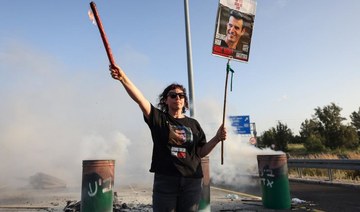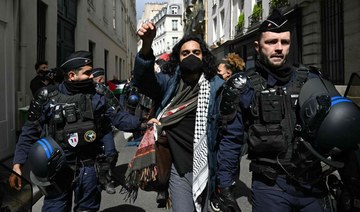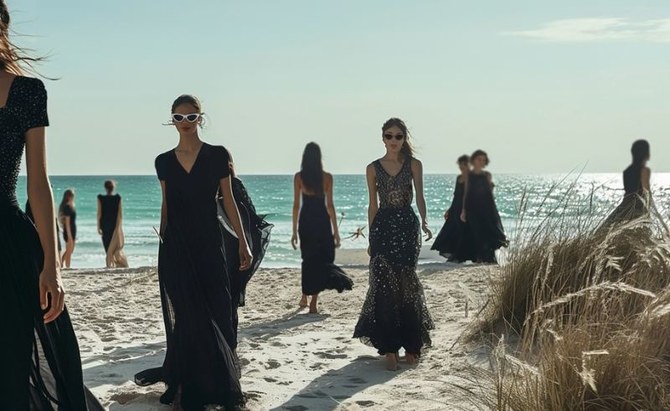DUBAI: On Feb. 26, 2015, disturbing footage emerged from northwestern Iraq showing Daesh militants smashing pre-Islamic artefacts and burning ancient manuscripts at the Mosul Cultural Museum.
The terrorist group had seized control of the multi-ethnic city the previous year, and had set about looting everything of value and destroying anything that failed to conform to its warped ideology.
Priceless objects, spread across the museum’s three central halls, had told the singular narrative of Iraq as a land of remarkable civilizations — from the Sumerians and the Akkadians to the Assyrians and the Babylonians.

A member of the Iraqi forces holds a damaged artifact in the museum on March 13, 2017. (AFP)
And yet it took only moments, as the camera rolled, for Daesh to physically erase the evidence of thousands of years of human history. The images, reminiscent of the Taliban’s demolition of the Bamiyan Buddhas, sent a wave of revulsion around the world.
At some heritage sites in Mosul, including the ancient city of Nimrud, up to 80 percent of the excavated and restored monuments had been destroyed, according to experts from the British Museum.
Almost two years after the pillaging, on July 21, 2017, Mosul was finally liberated by the Iraqi army, ushering in a period of painstaking reconstruction work to restore the city’s monuments, churches, mosques and archaeological treasures.

Iraqi forces battle Daesh outside Mosul Cultural Museum on March 11, 2017. (AFP)
An international partnership of institutions was established in 2018 to repair the museum’s damaged civil structure and collections ransacked by Daesh. Its members include the Geneva-based Alliance for the Protection of Heritage in Conflict Areas (ALIPH), the Musee du Louvre, the Smithsonian Institution and the World Monuments Fund (WMF).
These organizations work closely with the Iraqi State Board of Antiquities and Heritage (SBAH) and the museum’s director, Zaid Ghazi Saadullah.
The collaboration began when SBAH contacted ALIPH — an organization founded in 2017 to safeguard endangered heritage sites — to secure much-needed funding for the restoration.

Rosalie Gonzalez is a a project manager for the alliance. (Supplied)
“Iraq was one of the reasons ALIPH was created,” Rosalie Gonzalez, a project manager for the alliance, told Arab News. “It was one of the priority countries from the beginning. The Mosul Cultural Museum was the first project the foundation funded in Iraq.
“Through our calls for projects and our emergency relief mechanism, we funded 28 projects in Iraq for more than $9 million. Within three years, it’s a lot of progress and we’re very happy to have this extended portfolio in Iraq.”
Museum professionals who offered expertise and support were brought in to assess the extent of the damage.

Saad Ahmed, the Mosul Cultural Museum’s head of conservation (left), and Zaid Ghazi Saadullah, the museum’s director, examine a wood cenotaph in the Mosul Cultural Museum’s Islamic Hall in February 2019. (Supplied)
Nothing had been spared. The museum itself, founded in 1952, had been badly damaged, its windows and doors shattered, its roof torn open, and shell casings and unexploded ordnance left scattered throughout its grounds.
The museum’s once monumental winged bulls, known as Lamassus, had been reduced to gravel, while its figurative sculptures lay dismembered where they had fallen.
A rich collection of embellished friezes and Assyrian paintings had been looted and 25,000 manuscripts burned to ashes.
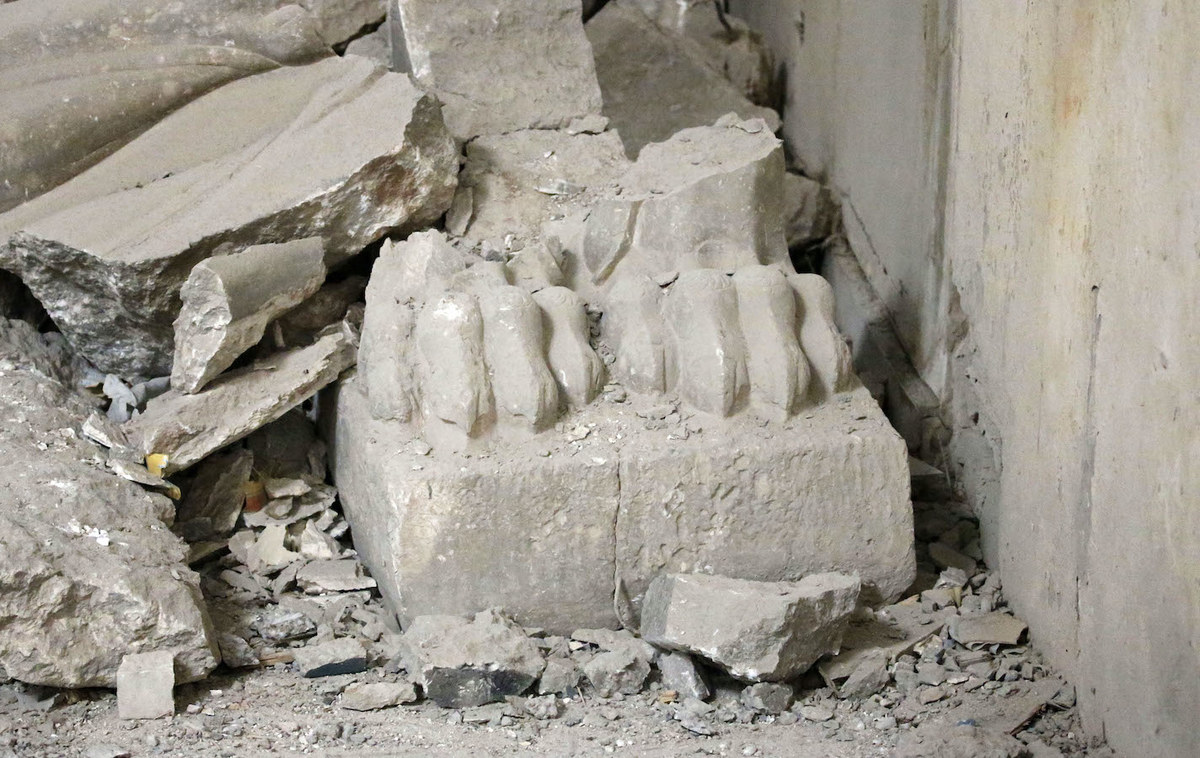
The remains of one of Mosul Cultural Museum’s lamassu statues. (AFP)
Perhaps the most harrowing sight of all was the gaping hole left in the floor of the Assyrian Hall, where a throne-like platform had stood before it was blown to pieces. One expert who visited the site likened it to a crime scene.
“I think the whole museum community felt like this really was a terrible crime against culture and history, and we had to do something about it,” Richard Kurin, ambassador-at-large at the Smithsonian Institution, told Arab News.
Ariane Thomas, a Mesopotamian art specialist and head of the Oriental antiquities department at Musee du Louvre, echoed his sentiments.

Ariane Thomas is the director of Oriental antiquities department at Musee du Louvre. (Musée du Louvre)
“It’s a complete loss,” she told Arab News from Paris. “It was a bit like losing someone I knew. I was also struck by the fact that so many people were deeply moved even though sometimes they didn’t know much about those objects.”
This shocking act of vandalism was not merely the product of Daesh’s ideology of “separating people from their history,” but was driven in large part by the pursuit of profit, Kurin said. After all, the militants looted several highly valuable items.
“There was an economic (logic) to this,” he said. “They were blowing up what they couldn’t carry and then removing what they could so that they could presumably sell it in exchange for armaments, bullets and explosives.

The Mosul Cultural Museum was the first project the foundation funded in Iraq. (Supplied)
“We know that Daesh engaged in a whole system of doing that. They gave permits to people to loot archaeological sites.”
A dedicated team of Iraqi experts, trained by professionals from the Louvre and Smithsonian, has set about sorting through the debris to salvage and conserve what was left behind.
What they find is carefully documented, catalogued and placed in a local storage facility that today functions as a fully equipped conservation laboratory, used by specialists for all recovery activities.
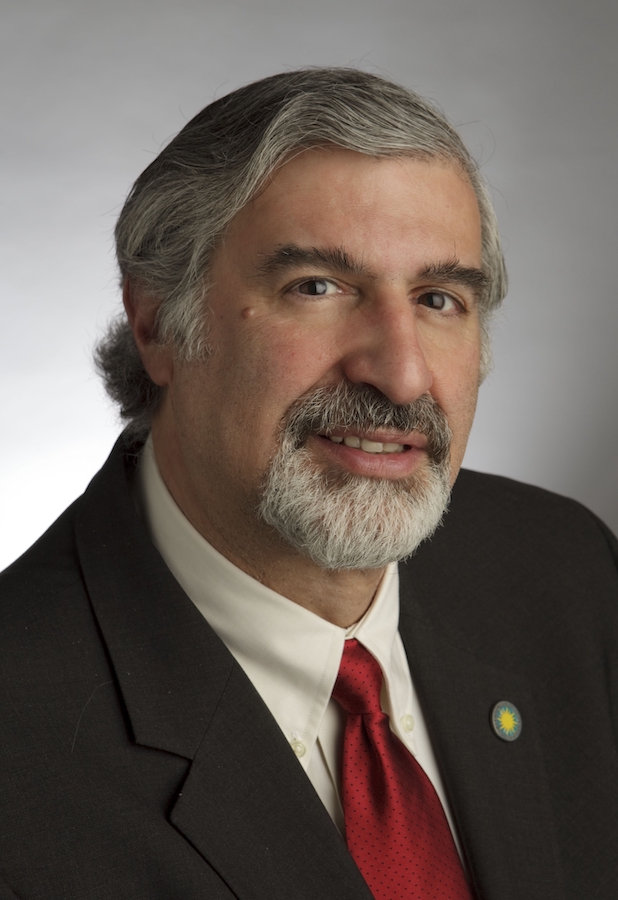
Richard Kurin is the ambassador-at-large at the Smithsonian Institution. (Smithsonian Institution)
The painstaking process of piecing objects back together has been carried out with the help of specialized equipment and computers supplied by the Louvre.
“What we did was treat the museum like it was an archaeological site,” said Kurin. “Rather than throwing all the rubble away, we collected it, labeled it and kept it systematic so that you could find the pieces of what was originally a whole.”
Progress was slowed by the coronavirus pandemic and related travel restrictions, but restoration advice and assistance continued remotely.
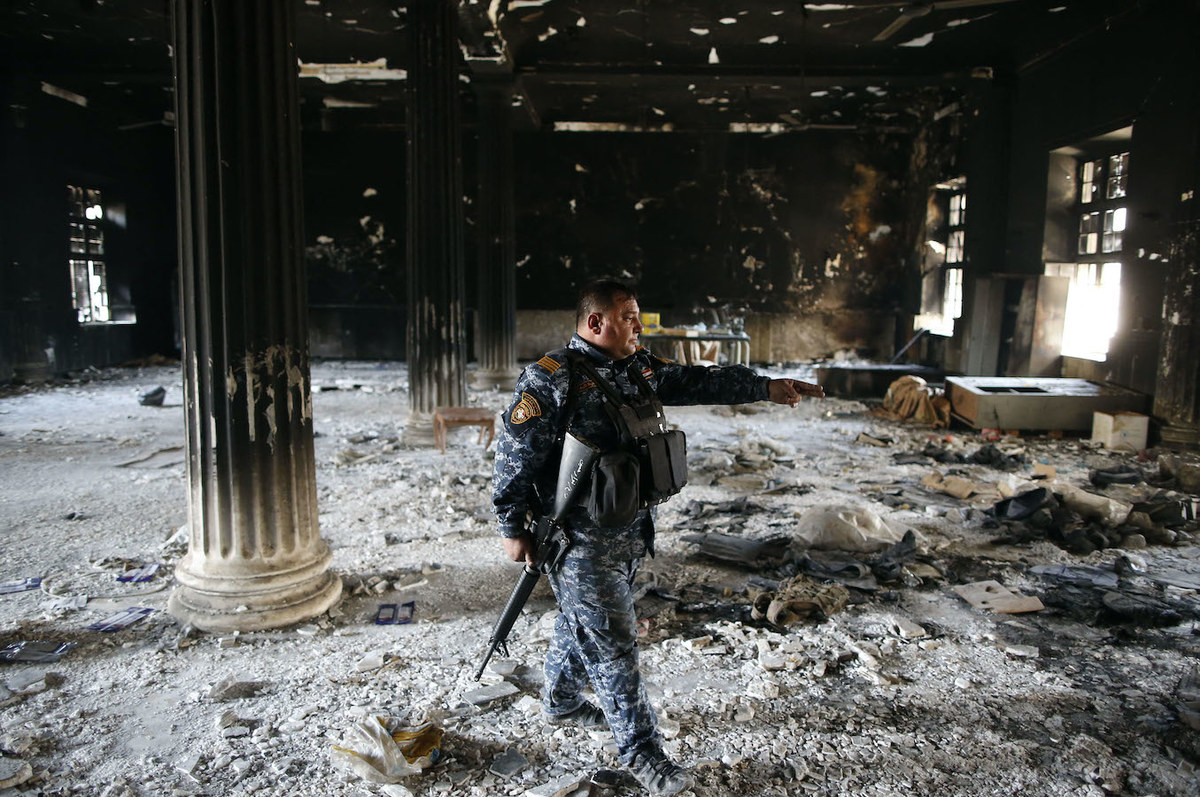
Iraqi forces battle Daesh outside Mosul Cultural Museum on March 11, 2017. (AFP)
“We decided that there was no reason to stop. And, morally, we couldn’t do so,” said Thomas. “So we built, from A to Z, a training program online on various subjects to better prepare the museum’s rehabilitation.
“We are still producing new videos. So far, we have 30 to 50 videos that are all in French and Arabic. We somehow invented a new way to move forward on the restoration despite the distance due to the health crisis.”
As for the integrity of the building itself, a team from the WMF has assessed the building and its surroundings and prepared a plan "including all necessary investigations and the development of concept, design, and construction drawings," its media office said.

The museum was founded in 1952. (Supplied)
Experts hope to reopen the museum within three to four years.
The revival of the Mosul Cultural Museum is significant on many levels: It emphasizes camaraderie in times of crisis; the city’s true multi-faith identity; and, above all, the refusal to allow Daesh’s “year-zero” ideology to prevail.
“Increasingly, museums have realized that they have a responsibility beyond their walls,” said Kurin.
As for Mosul, the museum’s emergence from the rubble offers cause for optimism. “By rebuilding the museum and the collections, the Iraqi team along with the international partners are sending a message of hope,” said Gonzalez.
“We will bring this museum back to life, and by doing so we will protect our past and build a better future.”










